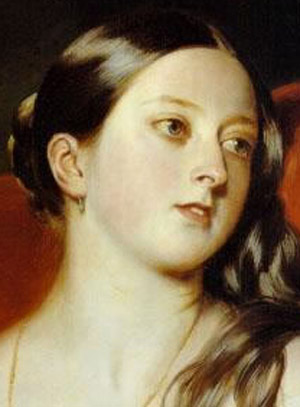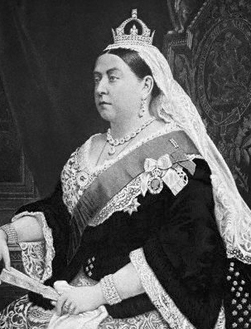 It would be difficult to improve on a personal brand for which an entire era was named: the Victorian Era.
It would be difficult to improve on a personal brand for which an entire era was named: the Victorian Era.
Continuing my study of the kings and queens who were the first to use personal branding, I focus this week on Queen Victoria, who inherited the throne at age 18 and ruled for 63 years and seven months – longer than any of her predecessors and only recently surpassed by Queen Elizabeth II.
To gain the love and respect of Britain’s people, Victoria had a monumental task. In addition to her youth and her sex, she was quite small in stature, only 4’11”—hardly the bristling oversized picture of manhood that we saw in Henry VIII. Her situation was made even worse by the behavior of her predecessors:
“The Hanoverian kings who ruled in the 18th and part of the 19th century were regarded within and without the Royal Household as deeply flawed; the last three (George III, George IV, William IV) were understood to be respectively gravelly ill or insane, a debauched bigamist, and “excitable, undignified [and] frequently absurd.”
~ Cele C. Otnes, Pauline Maclaran, Royal Fever: The British Monarchy in Consumer Culture.”
On top of all this, the role of the monarchy had changed. The United Kingdom had become a constitutional monarchy, in which mostly Parliament and the Prime Minister ran the government. The sovereign had little direct political power. In Victoria’s time, the monarch retained only “the right to be consulted, the right to encourage, and the right to warn,” according to British journalist Walter Bagehot.
In spite of such odds, Victoria became a powerhouse in a diminutive package, similar perhaps to Napoleon Bonaparte, but she used her power in strategic ways and avoided the pitfalls that plagued the French emperor.
She had a bumpy start, including a dust-up with Parliament expectations, a palace scandal, and even an assassination attempt, but she quickly established herself as strong-willed and outspoken. When she married her first cousin, Prince Albert of Saxe-Coburg and Gotha, in 1840, things began to improve. In a time when people were starting to question the value of having a monarchy at all, the royal couple redefined its purpose and elevated its influence based on their own personal values and interests. Together they developed what has been labeled a “heritage brand.”
According to Otnes and Maclaran, such brands have five characteristics:
- Track record, or ability to deliver over a long period of time
- Longevity
- Core values that guide policies and actions
- Use of symbols
- History important to their own identity

Victoria and Albert’s core values began the rise of “family values.”
- Victoria and Prince Albert shifted the paradigm of royal persona from monarch-centric to family friendly. Albert was one of the first to use the phrase “Royal Family,” and they used photography to project image of queen and consort as adoring couple surrounded by obedient and subdued children.
- A 14-photo set featuring the Royal Family sold more than 60,000 copies, and marked the beginning of photographic celebrity culture. More people could see and own images of the royal family; women tried to replicate Victoria’s fashions while some men copied Albert’s hairstyle and moustache.
- Victoria became patron of 150 institutions, including dozens of charities, while Albert supported the development of educational museums.
- They set a high moral code with values that supported sexual repression, low tolerance of crime, and a strong social ethic. People referred to arms and legs as limbs and extremities.
The symbols used also related to values:
- Public rituals, like changing of the guard, were laden with aesthetic material elements: castles, brightly colored regimental uniforms, well-groomed animals and musicians.
- The Victoria Cross honored acts of great bravery during the Crimean War and was awarded on merit instead of rank.
- The Queen began new royal traditions when she attended the first State Opening of Parliament in the new Palace of Westminster, arriving in the Irish State Coach. Every British monarch since has followed the protocols.
- Romantic and sexual feelings were mostly discussed in the language of the flowers
And for her identity history, Victoria had a large genealogical chart, “Coronation Stone,” that traced the queen’s roots through 124 generations, all the way back to Adam and Eve.
Add to these brand elements her vast influence on fashion. The 1830s style followed Victoria’s close-fitting bodice and bell-shaped skirt with embellishments of jewels, ribbons and floral trimmings; and tailored riding habit with a small plumed hat that is still worn today.
 The strength of Victoria’s brand weathered intense negative periods, such as the 1845 potato famine in Ireland, when over a million Irish people died and Victoria was labeled “The Famine Queen”; and controversy over the expansionist policies of prime minister Benjamin Disraeli that led to wars. Her popularity also declined after Albert died at age 42 and she fell into deep mourning. She wore black for the rest of her reign.
The strength of Victoria’s brand weathered intense negative periods, such as the 1845 potato famine in Ireland, when over a million Irish people died and Victoria was labeled “The Famine Queen”; and controversy over the expansionist policies of prime minister Benjamin Disraeli that led to wars. Her popularity also declined after Albert died at age 42 and she fell into deep mourning. She wore black for the rest of her reign.
Victoria’s reign was a period of industrial, cultural, political, scientific, and military change within the United Kingdom, and was marked by a great expansion of the British Empire, with Victoria embodying the empire as a benevolent matriarchal figure. She and Albert had nine children who married into royal and noble families across the continent, earning her the sobriquet “the grandmother of Europe.” Places named after her include Africa’s largest lake, Victoria Falls, the capitals of British Columbia (Victoria) and Saskatchewan (Regina), and two Australian states (Victoria and Queensland).
GEMS FROM THE CROWN:
What lessons can personal branders learn from Queen Victoria?
- Be willing to adapt: With a monarchy in danger of becoming irrelevant, instead she became a strong influencer, modeling family life, values, and morals.
- Live the Brand: Under a growing media presence, the royal family maintained a consistent visual identity because the brand was based on authentic values. They did not have to act or pretend.
- Use events and align with or incorporate existing traditions to establish relevance with your audience.
Thanks to: Royal Fever: The British Monarchy in Consumer Culture, by Cele C. Otnes and Pauline Maclaran. University of California Press, 2015; BBC Timelines, by Kate Williams (http://www.bbc.co.uk/timelines/ztn34j6); Fashion and Queen Victoria, Vintage Connections, Brenda Sneathen Mattox (http://www.vintageconnection.net/QueenVictoria.htm); Wikimedia commons, public domain.
Create your own royal brand:
 Brand Yourself Royally in 8 Simple Steps gives you lessons learned from some of the strongest royal brands, and walks you through the process to create your own unforgettable brand, including vision and mission statements, persona and positioning, colors and tagline, and much more, plus communications planning to put your new brand into action. Available in soft cover and ebook.
Brand Yourself Royally in 8 Simple Steps gives you lessons learned from some of the strongest royal brands, and walks you through the process to create your own unforgettable brand, including vision and mission statements, persona and positioning, colors and tagline, and much more, plus communications planning to put your new brand into action. Available in soft cover and ebook.
For all my books and events, visit my website, www.nancyblanton.com

 By the 15th century AD, we come to
By the 15th century AD, we come to  Henry VII was not loved, he was feared. It’s said that Shakespeare wrote no play for this king because era was just too painful, which may be true, but I would add that the story is so complex you need a full series to explain it. (Enter Starz and their series, The White Princess, based on Philippa Gregory’s novel.)
Henry VII was not loved, he was feared. It’s said that Shakespeare wrote no play for this king because era was just too painful, which may be true, but I would add that the story is so complex you need a full series to explain it. (Enter Starz and their series, The White Princess, based on Philippa Gregory’s novel.)